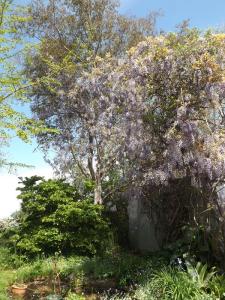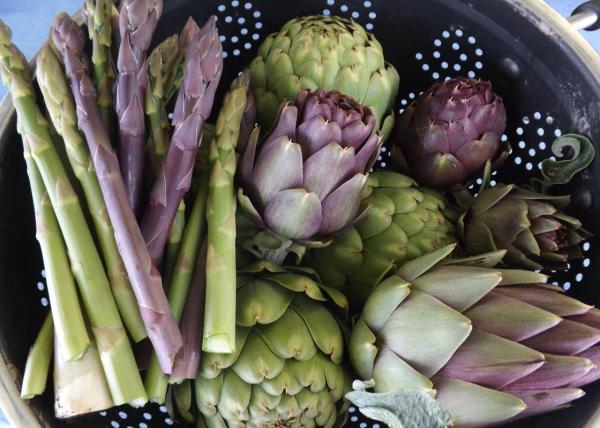(2015) About six months ago we decided it would be great to add a natural sunscreen to our range. Little did we realise how complex and exacting the process would be…read on
We have accumulated so much information about sunscreens that our brains have gone on strike, a bit like the feeling I get five minutes after starting a conversation with our accountant.
Here are some relevant facts to start with:
SPF stands for Sun Protection Factor, it works a bit like the Richter Scale for earthquakes, in other words to a lay person it’s rather confusing. An SPF 15 blocks 93.3% of UV rays, an SPF 30 blocks 96.7%, and SPF 50 blocks 98% so 30 is not double 15 as you would think, and not 30 times longer in the sun either. There are now limitations on SPF claims -50 being the highest.
A t present it’s not compulsory in NZ to get a sunscreen tested, but it seems a necessity to have an SPF value. Testing is available in Australia. There are 2 methods of measuring SPF: in a laboratory, which is called ‘in vitro’ & on people which is called ‘in vivo.’ At present the ‘in vivo’ system is the one with the most clout here & in Australia, but overseas it is being phased out. It seems an oddly unscientific method, where volunteers are tested with small patches of sunscreen for various amounts of time, in a controlled environment & a figure is arrived at. I’ll come back to these tests in a while.
t present it’s not compulsory in NZ to get a sunscreen tested, but it seems a necessity to have an SPF value. Testing is available in Australia. There are 2 methods of measuring SPF: in a laboratory, which is called ‘in vitro’ & on people which is called ‘in vivo.’ At present the ‘in vivo’ system is the one with the most clout here & in Australia, but overseas it is being phased out. It seems an oddly unscientific method, where volunteers are tested with small patches of sunscreen for various amounts of time, in a controlled environment & a figure is arrived at. I’ll come back to these tests in a while.
At first it seemed quite simple, Google provided us with much data about natural oils & their SPFs. We read that Carrot Seed Oil & Sacred Basil Oil had SPFs of 40 or so. How hard could it be to make a mix with an Olive & Coconut Oil base, add some Zinc oxide (ZnO) & away we go.
We’d heard that ZnO nano particles were bad guys, we didn’t want those. We read research that criticised the chemical sunscreens, these work by being absorbed into the deeper layers of your skin, & whilst screening you from the Sun they also got absorbed into your body. There are also reports that these products can cause skin irritaion & allergies. They are implicated as endocrine disruptors & contain skin penetration enhancers, which mean that people working with other chemicals, such as pesticides are at risk.
At first it seemed that there had been a difference between a sunscreen & a sunblock, a sunblock like ZnO works by creating a protective & reflective barrier on top of the skin, rather than inside it…but no that’s too logical, we must now call them all sunscreens.
OK, so we’re wanting to make a sunscreen that’s a sunblock, but we can’t call it that. We started by looking at all the natural oils & butters that had an SPF rating. We combined 2 recipes, an old one by Elizabeth Francke & a more modern one we found online. There were a lot of ingredients, strong black tea, lanolin, sesame oil, coconut oil, shea butter, several essential oils, but not citrus oils. We made a batch using pharmaceutical grade ZnO. We passed it out to friends & family. It smelt rather deliciously of food, it looked like putty, it rubbed on nicely. Feedback was positive.
Next step was to get some idea of the SPF rating, this required sending a sample over to Oz for testing. We were feeling pretty optimistic. Some $500 later the results told us it was not great, only SPF9. It seems that the SPF ratings for natural oils etc cannot be relied on to give a good SPF figure, dammit!!
Back to the drawing board, we sourced a finer grade of ZnO, micronised, we put more into the recipe, we beat the mixture for longer, apparently it is notoriously difficult to blend. We sent off a sample…we waited, we waited some more,the sample went missing, we sent off another sample (tracked for $40.) We waited, we alternated between optimism & pessimism, if this didn’t work we’d give it up as a bad idea. Result: SPF12, bugger!! another$500 gone, close but no banana (Geoff points out that I should say ‘No cigar’ & that I am being very PC by not referring to smoking- purely random brain function on my part).
After more consultation we looked again at the nano particle information, we found a place in Perth that made a range of Zinc oxide nano products in plant based oils. The product is Eco-certified, which is encouraging, the base mix is a coconut oil derivative. We looked again at the information on nano particles, it seems that much of the info was from 2008 & had been revised. Both the TGA & EWG reports & Cancer Council Australia deem it safe to use, looking at present time evaluations. The initial scare was that these small particles could be absorbed through the skin, this has proved not to be the case.
ZnO forms aggregates which are larger in size, and this creates some of the confusions around ZnO particle size. There seems to be confusion generally around the nano definition & how it is interpreted and measured. Some sunscreens that have made claims not to contain any nano particles actually do contain them.
Weighing up the pros & cons, it seems that the Zinc oxide with nano particles is a safer option than a chemical sunscreen which is absorbed into the skin.
- As ZnO forms a physical barrier it is ready to go as soon as you apply it, you don’t have to wait 20 minutes.
- ZnO sits on the surface of the skin & is not absorbed into it. Points of potential entry would be through damaged skin.
- In cream form, rather than spray or cosmetic powder there is no chance of inhaling it.
- The finer particles have a much bigger surface area & are more effective as a sunblock.
- The finer particles do not whiten the skin so much as the larger grades, so consumers are more inclined to use appropriate amounts.
The risk of sun damage far outweighs the risks of not using a sunscreen. The Cancer Council Australia has good information on the topic, and comments that if a product is labelled whether or not it contains nano particles, then the consumer can make up their own mind.
So we’ve come full circle, & have decided that on balance we feel that ZnO nano particles dispersed in an oil base offer a reliable way of getting a good sunscreen, with consistent results. We were sent a sample of ZinclearXP65COCO & made two batches which we sent back to their lab to be assessed. The ZnO is dispersed 65% in an oil base called Coco caprylate/caprate, which is derived from coconut oil. The product has Eco cert & Natural Products certification. It is biodegradeable.
The latest results from Dermatest are below:
(28/2/2017) This was a preliminary test, and we hope to get a full testing in the Spring of 2018
Here are the results & explanations for the values:
|
Parameters |
Millstream |
|
|
SPF |
34.8 |
Pass |
|
Critical Wavelength |
373.00 |
Pass |
|
UVAPF |
17.72 |
Pass |
|
UVAPF/SPF |
0.590 |
Pass |
The estimated in-vivo SPF value for the sunscreen is 34.8
Critical Wavelength– The critical wavelength is an additional requirement for UVA logo, it must be equal or higher than 370, both your samples passed the specification at critical wavelength of 373.
UVAPF and UVAPF/ SPF – For European regulation, there is also a requirement to provide the consumer with a minimum level of UVA protection in relation to the SPF. This should be “UVA PF” or at least 1/3 (0.33) of the SPF to carry the UVA seal.
The good thing about Zinclear XP65COCO that you used for this formulation is that it has high Zinc Oxide loading and it’s already in a dispersed form. As long as you are consistent with your technique in mixing Zinclear with the bulk and in homogenising the emulsion, you’ll achieve good SPF rating.
Meantime we have done the best we can, & all the other ingredients in our recipe are user friendly, even the emulsifier & preservative are Eco certified. We have included lanolin as a water protector, but we make no claims that this is water resistant (that requires more tests & more $$).
Other things to consider when looking at sunscreens are:
- The balancing act between skin protection & getting the Vitamin D you need.
- Other ways to protect yourself including avoiding the hottest part of the day, wearing a hat & light clothing.
- Using the appropriate amount of sunscreen as recommended, re-applying as needed, especially after swimming.
- One rule of thumb is a teaspoon per body part or area: 1 teaspoon for your face, head, and neck; 1 for each arm; 1 for each leg; 1 for your chest and abdomen, and 1 for your back and the back of your neck, although you won’t need so much of our sunscreen, your skin shouldn’t look white once it is rubbed in. Regardless of which SPF you use, apply it 15 to 30 minutes before going outside to allow it to adhere to skin, then reapply at least every 2 hours—more often if you’re swimming or sweating excessively.
There’s lots of info online, this is just the tip of the iceberg, so check it out & make your own choices. Below are a few of sites we referred to:
- http://health.howstuffworks.com/skin-care/beauty/sun-care/spf1.htm
- http://www.choice.com.au/health-and-body/beauty-and-personal-care/skin-care-and-cosmetics/articles/sunscreen-and-nanoparticles
- http://www.ewg.org/2015sunscreen/report/nanoparticles-in-sunscreen/
- http://www.consumerreports.org/cro/magazine/2015/05/how-much-sunscreen-to-apply/index.htm
- http://www.tga.gov.au/literature-review-safety-titanium-dioxide-and-zinc-oxide-nanoparticles-sunscreens
































